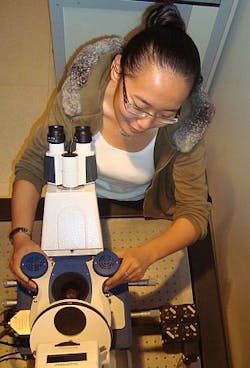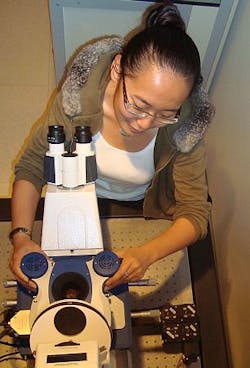Tip-assisted optics help characterize biomolecular hydrogels
Researchers at the Centre for Cooperative Research in Biomaterials' (CIC biomaGUNE; San Sebastian, Spain) Biosurfaces Unit used a combined microscopy techniqueâincluding atomic force microscopy (AFM)âwith tip-assisted optics to characterize biomolecular hydrogels, which are soft materials assembled from proteins and glycans that are produced in the human body or by other bioorganisms. Of particular interest for the group's research are cellular coats that are rich in the polysaccharide hyaluronan, which are important in processes such as fertilization, osteoarthritis, and inflammation.
The group, led by Ralf Richter, MSc, Ph.D., develops methods to re-create these specialized natural hydrogels through the controlled assembly from their molecular components in-vitro. Functionalized surfaces are used to guide the self-assembly process. The resulting model films have the advantage that they can be better controlled and studied in much greater detail than the original materials. By doing so, the hope is to understand the fundamental mechanisms behind the assembly and functions of biomolecular hydrogels.
While AFM is used to obtain nanoscale topographic information about the self-assembled architecture of the materials created, it can also quantify the mechanical properties of hydrogels. The group employs colloidal probe AFM to obtain this information, explains Richter, but determining the distance between the probe and the substrate on which the polymer film is deposited is a challenge. In an earlier study, the team overcame this problem by combining reflection interference contrast microscopy (RICM) and AFM in-situ.1 The combined setup they used (JPK Instruments' NanoWizard AFM system) enabled simultaneous measurement of forces and absolute distances between substrate and probe, thanks to a tip-assisted optics module to keep the colloidal probe in the center of the optical image while probing different spots on the surface, he says.
REFERENCE
1. S. Attili and R. P. Richter, Langmuir, 28, 3206 (2012).
-----
Follow us on Twitter, 'like' us on Facebook, and join our group on LinkedIn
Laser Focus World has gone mobile: Get all of the mobile-friendly options here.
Subscribe now to BioOptics World magazine; it's free!

